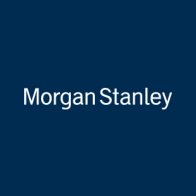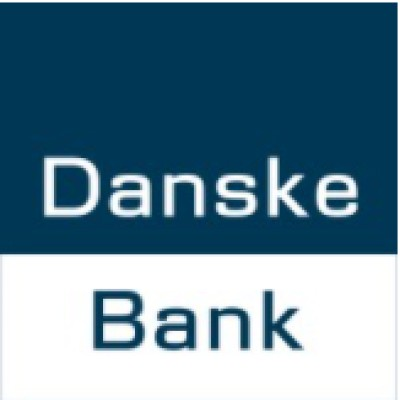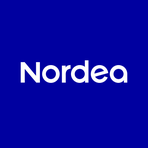The Financial Landscape: A Tapestry of Green Bonds and Share Buybacks
June 18, 2025, 1:14 pm
In the ever-evolving world of finance, the recent activities of Heimstaden Bostad AB and Nordea Bank Abp paint a vivid picture of strategic maneuvers aimed at sustainability and shareholder value. These developments are not just numbers on a balance sheet; they represent a shift in how companies approach growth and responsibility.
Heimstaden Bostad AB recently made headlines by issuing SEK 1,250 million in green floating rate notes. This move is more than a financial transaction; it’s a commitment to sustainability. The notes, maturing in four years, carry a coupon linked to the 3-month STIBOR rate plus 1.50 percent. The funds raised will fuel projects aligned with the company’s Green and Sustainability-Linked Financing Framework. This framework, reviewed by Sustainalytics, sets the stage for financing energy-efficient buildings. It’s a roadmap for a greener future, where every brick laid is a step toward sustainability.
The company’s strategy is clear. It aims to enrich lives through “Friendly Homes.” With a property value of SEK 323 billion and a portfolio of around 161,000 homes across nine countries, Heimstaden is not just a player in the real estate market; it’s a pioneer. The repurchase of SEK 206 million in senior unsecured notes maturing in 2026 further demonstrates its proactive approach to managing debt and optimizing its capital structure.
Meanwhile, Nordea Bank Abp is making waves with its share buyback program. Announced on June 12, 2025, the program allows for repurchases of up to EUR 250 million. This initiative is not merely about buying back shares; it’s a calculated move to enhance shareholder returns and maintain an efficient capital structure. The buyback will commence on June 16, 2025, and aims to conclude by September 30, 2025.
Nordea’s strategy reflects a broader trend in the banking sector. By engaging a third-party broker to execute the buybacks, Nordea ensures independence in timing and execution. This approach aligns with regulatory frameworks, ensuring compliance while maximizing shareholder value. The bank’s decision to repurchase shares, rather than distribute excess capital through dividends, signals a commitment to enhancing shareholder equity in a more dynamic way.
The recent repurchases, including 288,878 shares at an average price of EUR 12.53, underscore Nordea’s intent to optimize its capital. The bank holds a total of 10,299,096 treasury shares for remuneration purposes, indicating a dual strategy of rewarding shareholders while also managing its capital efficiently.
In a related development, Nordea’s ongoing share buyback program is part of a larger narrative of financial resilience. The bank has received approval from the European Central Bank (ECB) for these buybacks, reinforcing its position in the market. The program’s structure allows for flexibility, enabling Nordea to pause or terminate the buyback in response to corporate events, such as dividend payments.
On another front, Norse Atlantic ASA has entered into a USD 20 million bank overdraft facility with Nordea. This facility, guaranteed by the company’s CEO, replaces a previously undrawn revolving credit facility. It highlights the interconnectedness of financial strategies and the importance of liquidity in navigating market challenges.
The financial landscape is also witnessing a surge in bond issuance. Eltel AB recently announced a successful bond issue of EUR 130 million, aimed at financing critical infrastructure projects. The bonds, carrying a floating rate interest of 3m EURIBOR plus a margin of 5.25%, reflect strong demand from institutional investors. This trend towards bond issuance is a testament to the growing appetite for sustainable investments.
Eltel’s bond issuance is not just a financial maneuver; it’s a commitment to enhancing the digital and electrification infrastructure in the Nordics. The company’s role as a service provider for critical infrastructure underscores the importance of investing in the future. The acceptance of EUR 24 million in tenders for existing hybrid bonds further illustrates Eltel’s strategic financial management.
As these companies navigate the complexities of the financial world, their actions resonate beyond the numbers. They reflect a broader commitment to sustainability, shareholder value, and responsible financial management. The issuance of green bonds and share buybacks are not isolated events; they are part of a larger tapestry of corporate responsibility and strategic foresight.
In conclusion, the financial landscape is a dynamic arena where companies like Heimstaden Bostad and Nordea Bank are redefining success. Their strategies intertwine sustainability with profitability, creating a blueprint for the future. As they forge ahead, the impact of their decisions will ripple through the markets, shaping the financial narrative for years to come. The road ahead is paved with opportunities, and these companies are poised to lead the way.
Heimstaden Bostad AB recently made headlines by issuing SEK 1,250 million in green floating rate notes. This move is more than a financial transaction; it’s a commitment to sustainability. The notes, maturing in four years, carry a coupon linked to the 3-month STIBOR rate plus 1.50 percent. The funds raised will fuel projects aligned with the company’s Green and Sustainability-Linked Financing Framework. This framework, reviewed by Sustainalytics, sets the stage for financing energy-efficient buildings. It’s a roadmap for a greener future, where every brick laid is a step toward sustainability.
The company’s strategy is clear. It aims to enrich lives through “Friendly Homes.” With a property value of SEK 323 billion and a portfolio of around 161,000 homes across nine countries, Heimstaden is not just a player in the real estate market; it’s a pioneer. The repurchase of SEK 206 million in senior unsecured notes maturing in 2026 further demonstrates its proactive approach to managing debt and optimizing its capital structure.
Meanwhile, Nordea Bank Abp is making waves with its share buyback program. Announced on June 12, 2025, the program allows for repurchases of up to EUR 250 million. This initiative is not merely about buying back shares; it’s a calculated move to enhance shareholder returns and maintain an efficient capital structure. The buyback will commence on June 16, 2025, and aims to conclude by September 30, 2025.
Nordea’s strategy reflects a broader trend in the banking sector. By engaging a third-party broker to execute the buybacks, Nordea ensures independence in timing and execution. This approach aligns with regulatory frameworks, ensuring compliance while maximizing shareholder value. The bank’s decision to repurchase shares, rather than distribute excess capital through dividends, signals a commitment to enhancing shareholder equity in a more dynamic way.
The recent repurchases, including 288,878 shares at an average price of EUR 12.53, underscore Nordea’s intent to optimize its capital. The bank holds a total of 10,299,096 treasury shares for remuneration purposes, indicating a dual strategy of rewarding shareholders while also managing its capital efficiently.
In a related development, Nordea’s ongoing share buyback program is part of a larger narrative of financial resilience. The bank has received approval from the European Central Bank (ECB) for these buybacks, reinforcing its position in the market. The program’s structure allows for flexibility, enabling Nordea to pause or terminate the buyback in response to corporate events, such as dividend payments.
On another front, Norse Atlantic ASA has entered into a USD 20 million bank overdraft facility with Nordea. This facility, guaranteed by the company’s CEO, replaces a previously undrawn revolving credit facility. It highlights the interconnectedness of financial strategies and the importance of liquidity in navigating market challenges.
The financial landscape is also witnessing a surge in bond issuance. Eltel AB recently announced a successful bond issue of EUR 130 million, aimed at financing critical infrastructure projects. The bonds, carrying a floating rate interest of 3m EURIBOR plus a margin of 5.25%, reflect strong demand from institutional investors. This trend towards bond issuance is a testament to the growing appetite for sustainable investments.
Eltel’s bond issuance is not just a financial maneuver; it’s a commitment to enhancing the digital and electrification infrastructure in the Nordics. The company’s role as a service provider for critical infrastructure underscores the importance of investing in the future. The acceptance of EUR 24 million in tenders for existing hybrid bonds further illustrates Eltel’s strategic financial management.
As these companies navigate the complexities of the financial world, their actions resonate beyond the numbers. They reflect a broader commitment to sustainability, shareholder value, and responsible financial management. The issuance of green bonds and share buybacks are not isolated events; they are part of a larger tapestry of corporate responsibility and strategic foresight.
In conclusion, the financial landscape is a dynamic arena where companies like Heimstaden Bostad and Nordea Bank are redefining success. Their strategies intertwine sustainability with profitability, creating a blueprint for the future. As they forge ahead, the impact of their decisions will ripple through the markets, shaping the financial narrative for years to come. The road ahead is paved with opportunities, and these companies are poised to lead the way.


